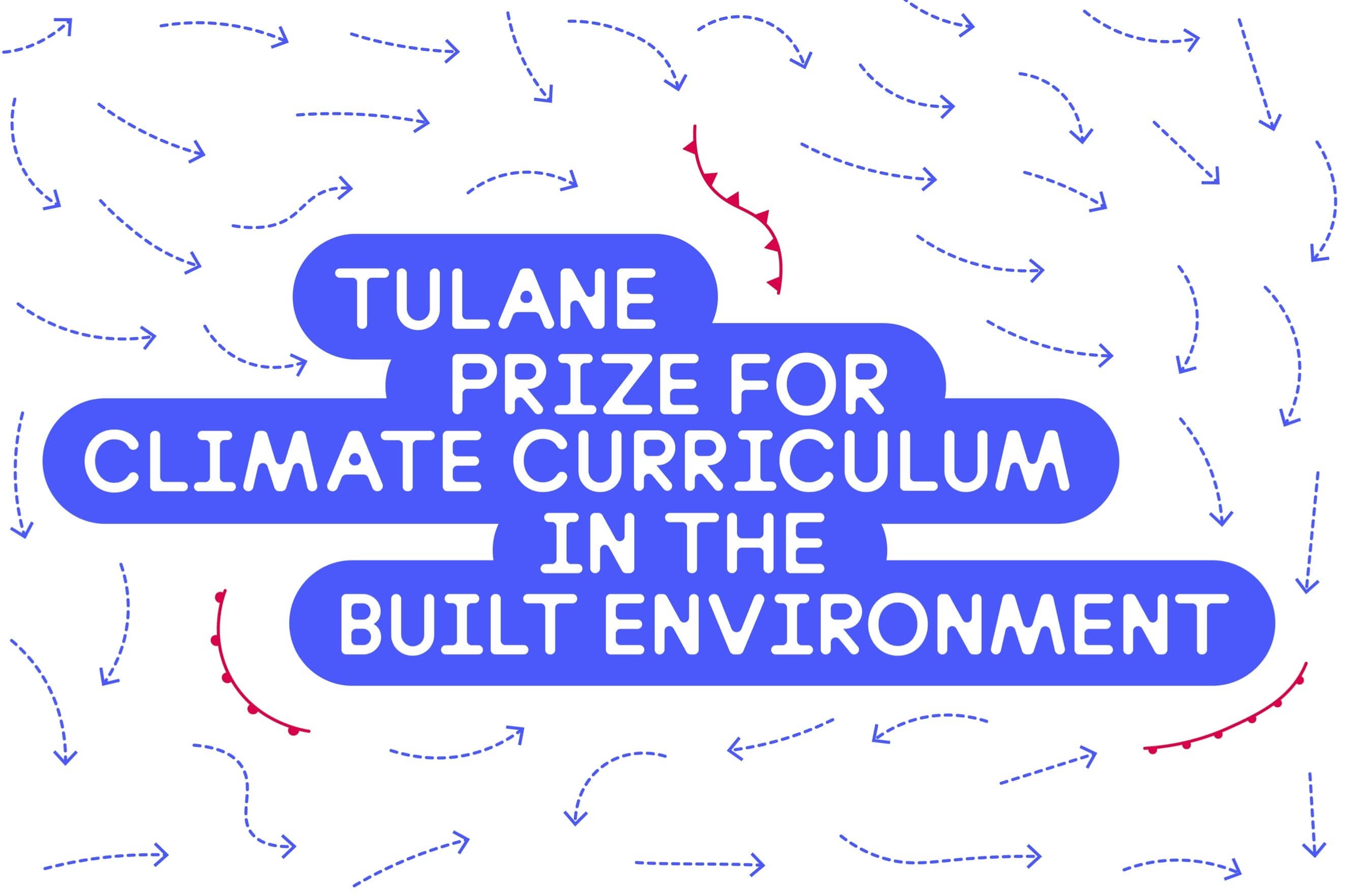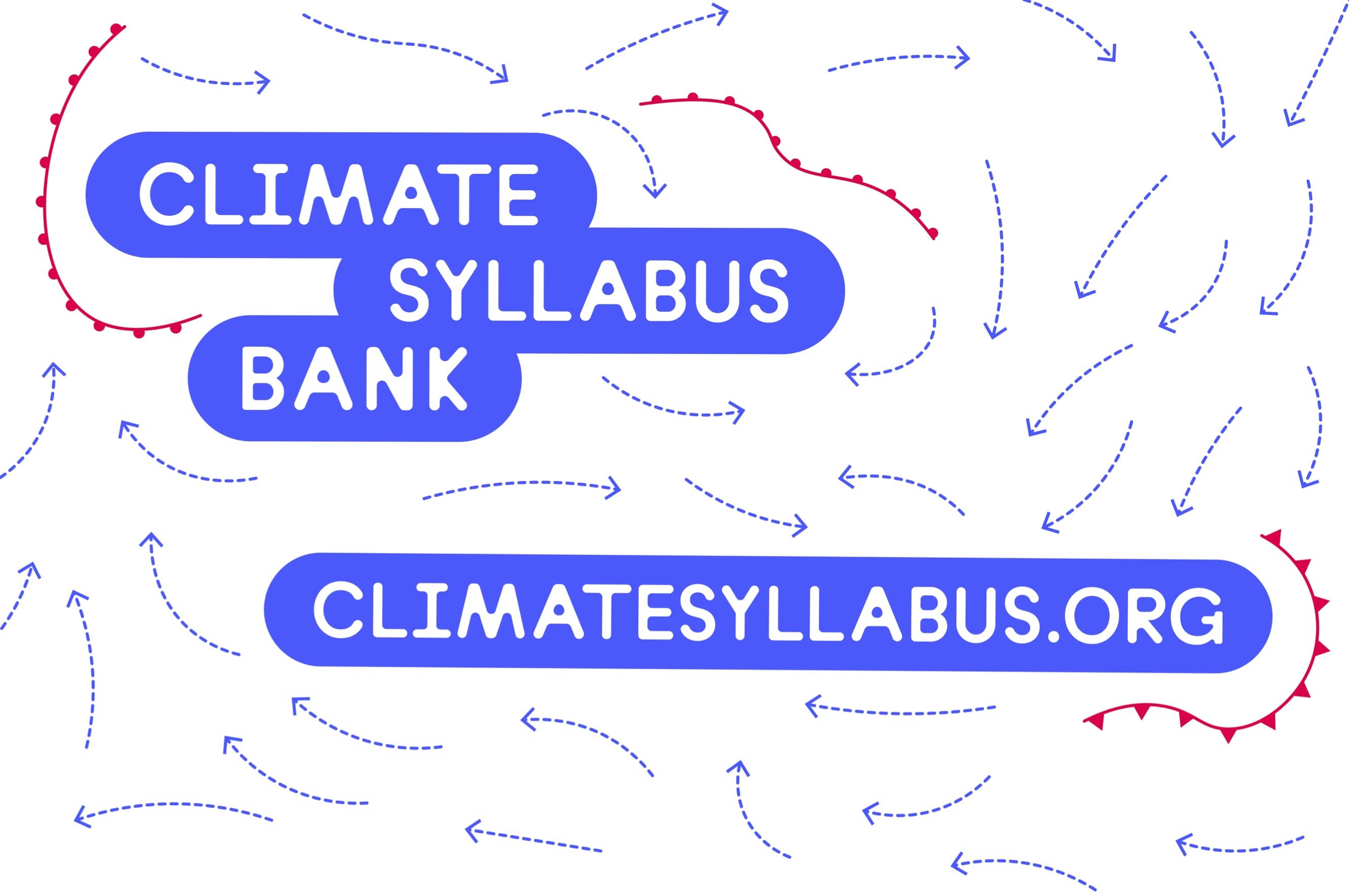
www.buildingsandcities.org/insights/commentaries/climate-change-research-education-gap.html
Bridging the Climate Change Research and Education Gap

Challenges ahead: the curriculum in many US built environment courses needs to change
Jesse M. Keenan (Tulane University) comments on the growing disconnect between climate change research and education in the built environment in the United States. Changes to the curriculum and pedagogy have been slow and students lack appropriate knowledge and skills in several key areas for both mitigation and adaptation. The launch of the Climate Syllabus Bank and the Tulane Prize in Climate Change Curriculum in the Built Environment by the Center on Climate Change and Urbanism at Tulane University are steps intended to foster the needed changes to the delivery of a curriculum for built environment students that integrates climate issues.
The past decade has seen the emergence of a transdisciplinary study of climate mitigation and adaptation in the built environment, as well as disciplinary specializations across fields of design, planning, and management. As the Intergovernmental Panel on Climate Change (IPCC) embarks to validate this scholarship in a Special Report on Climate Change and Cities, there is an opportunity to reflect not just on the research but also on the state of climate education. In recent years, some specific journals such as Buildings & Cities have arisen to support a wide range of research that is grounded in very practical challenges associated with decarbonizing and derisking the built environment. Yet, many academic institutions that drive the production of scholarship are increasingly disconnected from the demands for climate change education.
In the United States, the landscape for climate education in the built environment is bleak. The most immediate challenge is a lack of qualified professors. While there have been many well intended faculty who have grafted onto the emotional urgency of climate change, they have often entered into this domain without the benefit of a disciplined understanding of the supporting academies or literature. As a consequence, the epistemological foundations of their teaching and research are often weak and sometimes even conflicting with the conventions of the representative academies. This has the reciprocal effect of limiting the capacity of professional and accreditation bodies to rely on the academy for the development and validation of new standards.
For instance, many people continue to revolve their work around 'resilience' without understanding the fact that there are many different types of resilience from engineering resilience (Wied et al. 2020) to community resilience (Koliou et al. 2020) that each have their own conceptual, empirical, and methodological autonomy (Meerow et al. 2016). Worse, few seem to understand that many (not most) interventions advanced in the name of resilience have observable maladaptive implications across a diversity of stakeholders and spatial and temporal contexts (Reckien et al. 2023). A failure to understand conceptual trade-offs and actual conflicts risks exacerbating everything from the carbon intensiveness of material interventions to greater measures of socioeconomic inequality and marginalization (Juhola et al. 2016).
The good news is that climate mitigation education has benefited from a strong cohort of scholars that have been nurtured around energy science and technology for several generations. Structures, building science and systems, and materials core courses often incorporate dimensions of climate change into their curriculum. Faculty in climate adaptation have no such foundation outside of a select few who started their careers in an allied area of hazard mitigation. The problem is that both climate mitigation and adaptation studies extend well beyond energy and hazard mitigation, respectively. Given this narrow range of qualified faculty, students are often only getting access to specialized areas of knowledge. As such, students are graduating without a basic literacy in climate change. How many of your students and colleagues can tell you the W/m2 of stabilized radiant forcing associated with an RCP 4.5 scenario? It is not a trick question.
The pipeline for scholarly and professional climate training in the United States is limited to a few specialized sub-fields within a handful of universities. Climate scholarship tends to be concentrated in one of several areas, including energy performance within building science and technology; ecological resilience and restoration within landscape architecture; and, adaptation planning and environmental justice advocacy within urban planning. These emergent and junior faculty are making important contributions, many of which can be found in this journal. Unfortunately, this emerging subject matter expertise is not reflected in the core curriculum that has little room for climate change given the pressing demands of professional accreditation.
Of course, there is a feedback loop here insofar as professional accreditation lacks the expertise necessary to push climate competencies and standards forward in the accreditation standards themselves. As a consequence of this misalignment, basic analytical skills are slipping through the cracks. If a studio or thesis student designs a building in their penultimate year of study and they are unable to calculate or even roughly estimate the lifecycle carbon equivalency emissions of their building, then the system of architectural education has failed in its basic stewardship of a publicly regulated profession. Given the ideological fervor for advocacy in higher education, one would anticipate a first order consideration for the general public who bears the consequences of unmitigated carbon intensive designs.
Overall, climate coursework makes up a tiny fraction of courses and most of these courses are upper-level specialized electives. Core, introductory, or survey courses that cover the basic science, applied science, and social science of climate change are few and far between. Without these core courses, students often entered into upper-level elective courses unprepared and overwhelmed by the content that they are thrown into. Can you imagine taking an upper-level astronomy class without ever having taken a class in physics? Faculty often skip a step in jumping forward with normative 'imaginaries' and 'visions' in grayscale that lack the color necessary to paint a complete picture. Design research plays an important role, but students should have a full palette of methods, concepts, and language to work with. Without this language, they are inadequately prepared to engage the messiness of contested spaces, values, and public policies that are at the heart of climate interventions (or, non-interventions) in the built environment.
One consequence of not having core climate courses is that there is a lack of economic incentive for the production of textbooks, which are particularly critical for helping faculty take on new subject matter. It also has the consequence of limiting the production of pedagogical research that can advance innovative modes and methods for teaching multidisciplinary knowledge. Without research in pedagogy, faculty are often flying blind when it comes to the identification of learning objectives and the metrics for attaining satisfactory competencies. At a time when faculty should be raising the bar for climate education, the bar does not seem to exist.
How far apart is the research from the curriculum? Sustainable real estate offers a clue. The United States has an active area of research within sustainable real estate that includes a variety of disciplinary perspectives from economics to urban design. Among other things, sustainable real estate evaluates how sustainability investments in buildings are underwritten, designed, paid for, and measured. There is even a prominent journal (Journal of Sustainable Real Estate) that serves the field. While nearly a thousand journal articles are published every year in a variety of journals, no one seems to be actually teaching sustainable real estate. By one estimate, there are approximately five or six sustainable real estate courses offered in any given year across dozens of undergraduate and graduate real estate programs that exist at every major school of the built environment across the country. Unfortunately, this disconnect between research production and curriculum developments is all too familiar for architecture, urban planning and design, construction management, building science and technology, urban studies, historic preservation, regional science, and landscape architecture programs throughout the US.

To foster future innovation in climate curriculum development, the Center on Climate Change and Urbanism (CCU) at Tulane University in New Orleans, Louisiana (US) has launched the Tulane Prize for Climate Change Curriculum in the Built Environment.This monetary prize will be awarded annually to educators who demonstrate excellence in the development of core and elective curriculum in climate change and the built environment (CCU, 2024). CCU has also launched a syllabus bank in order to support educators who are looking for resources to structure their own courses. There is no time to waste. We have to work together across disciplines and academic institutions in order to support new curriculum. Every course counts. The CCU welcomes your participation as part of our collective transformation.
References
Center on Climate Change and Urbanism (CCU). (2024). 2024-2025 Prize in Climate Change Curriculum in the Built Environment. New Orleans: Tulane University. https://climatesyllabus.org/
Juhola, S., Glaas, E., Linnér, B.O. and Neset, T.S. (2016). Redefining maladaptation. Environmental Science & Policy, 55, 135-140. https://doi.org/10.1016/j.envsci.2015.09.014
Koliou, M., van de Lindt, J.W., McAllister, T.P., Ellingwood, B.R., Dillard, M. & Cutler, H. (2020). State of the research in community resilience: Progress and challenges. Sustainable and Resilient Infrastructure, 5(3), 131-151. https://doi.org/10.1080/23789689.2017.1418547
Meerow, S., Newell, J.P. & Stults, M. (2016). Defining urban resilience: A review. Landscape and Urban Planning, 147, 38-49. https://doi.org/10.1016/j.landurbplan.2015.11.011
Reckien, D., Magnan, A.K., Singh, C., Lukas-Sithole, M., Orlove, B., Schipper, E.L.F. & Coughlan de Perez, E. (2023). Navigating the continuum between adaptation and maladaptation. Nature Climate Change, 13(9), 907-918. https://doi.org/10.1038/s41558-023-01774-6
Wied, M., Oehmen, J. & Welo, T. (2020). Conceptualizing resilience in engineering systems: An analysis of literature. Systems Engineering, 23(1), 3-13. https://doi.org/10.1002/sys.21491
Latest Peer-Reviewed Journal Content
Youth engagement in urban living labs: tools, methods and pedagogies
N Charalambous, C Panayi, C Mady, T Augustinčić & D Berc
Co-creating urban transformation: a stakeholder analysis for Germany’s heat transition
P Heger, C Bieber, M Hendawy & A Shooshtari
Placemaking living lab: creating resilient social and spatial infrastructures
M Dodd, N Madabhushi & R Lees
Church pipe organs: historical tuning records as indoor environmental evidence
B Bingley, A Knight & Y Xing
A framework for 1.5°C-aligned GHG budgets in architecture
G Betti, I Spaar, D Bachmann, A Jerosch-Herold, E Kühner, R Yang, K Avhad & S Sinning
Net zero retrofit of the building stock [editorial]
D Godoy-Shimizu & P Steadman
Co-learning in living labs: nurturing civic agency and resilience
A Belfield
The importance of multi-roles and code-switching in living labs
H Noller & A Tarik
Researchers’ shifting roles in living labs for knowledge co-production
C-C Dobre & G Faldi
Increasing civic resilience in urban living labs: city authorities’ roles
E Alatalo, M Laine & M Kyrönviita
Co-curation as civic practice in community engagement
Z Li, M Sunikka-Blank, R Purohit & F Samuel
Preserving buildings: emission reductions from circular economy strategies in Austria
N Alaux, V Kulmer, J Vogel & A Passer
Urban living labs: relationality between institutions and local circularity
P Palo, M Adelfio, J Lundin & E Brandão
Living labs: epistemic modelling, temporariness and land value
J Clossick, T Khonsari & U Steven
Co-creating interventions to prevent mosquito-borne disease transmission in hospitals
O Sloan Wood, E Lupenza, D M Agnello, J B Knudsen, M Msellem, K L Schiøler & F Saleh
Circularity at the neighbourhood scale: co-creative living lab lessons
J Honsa, A Versele, T Van de Kerckhove & C Piccardo
Positive energy districts and energy communities: how living labs create value
E Malakhatka, O Shafqat, A Sandoff & L Thuvander
Built environment governance and professionalism: the end of laissez-faire (again)
S Foxell
Co-creating justice in housing energy transitions through energy living labs
D Ricci, C Leiwakabessy, S van Wieringen, P de Koning & T Konstantinou
HVAC characterisation of existing Canadian buildings for decarbonisation retrofit identification
J Adebisi & J J McArthur
Simulation and the building performance gap [editorial]
M Donn
Developing criteria for effective building-sector commitments in nationally determined contributions
P Graham, K McFarlane & M Taheri
Join Our Community

The most important part of any journal is our people – readers, authors, reviewers, editorial board members and editors. You are cordially invited to join our community by joining our mailing list. We send out occasional emails about the journal – calls for papers, special issues, events and more.
We will not share your email with third parties. Read more



Latest Commentaries
COP30 Report
Matti Kuittinen (Aalto University) reflects on his experience of attending the 2025 UN Conference of the Parties in Belém, Brazil. The roadmaps and commitments failed to deliver the objectives of the 2025 Paris Agreement. However, 2 countries - Japan and Senegal - announced they are creating roadmaps to decarbonise their buildings. An international group of government ministers put housing on the agenda - specifying the need for reduced carbon and energy use along with affordability, quality and climate resilience.
Building-Related Research: New Context, New Challenges
Raymond J. Cole (University of British Columbia) reflects on the key challenges raised in the 34 commissioned essays for Buildings & Cities 5th anniversary. Not only are key research issues identified, but the consequences of changing contexts for conducting research and tailoring its influence on society are highlighted as key areas of action.